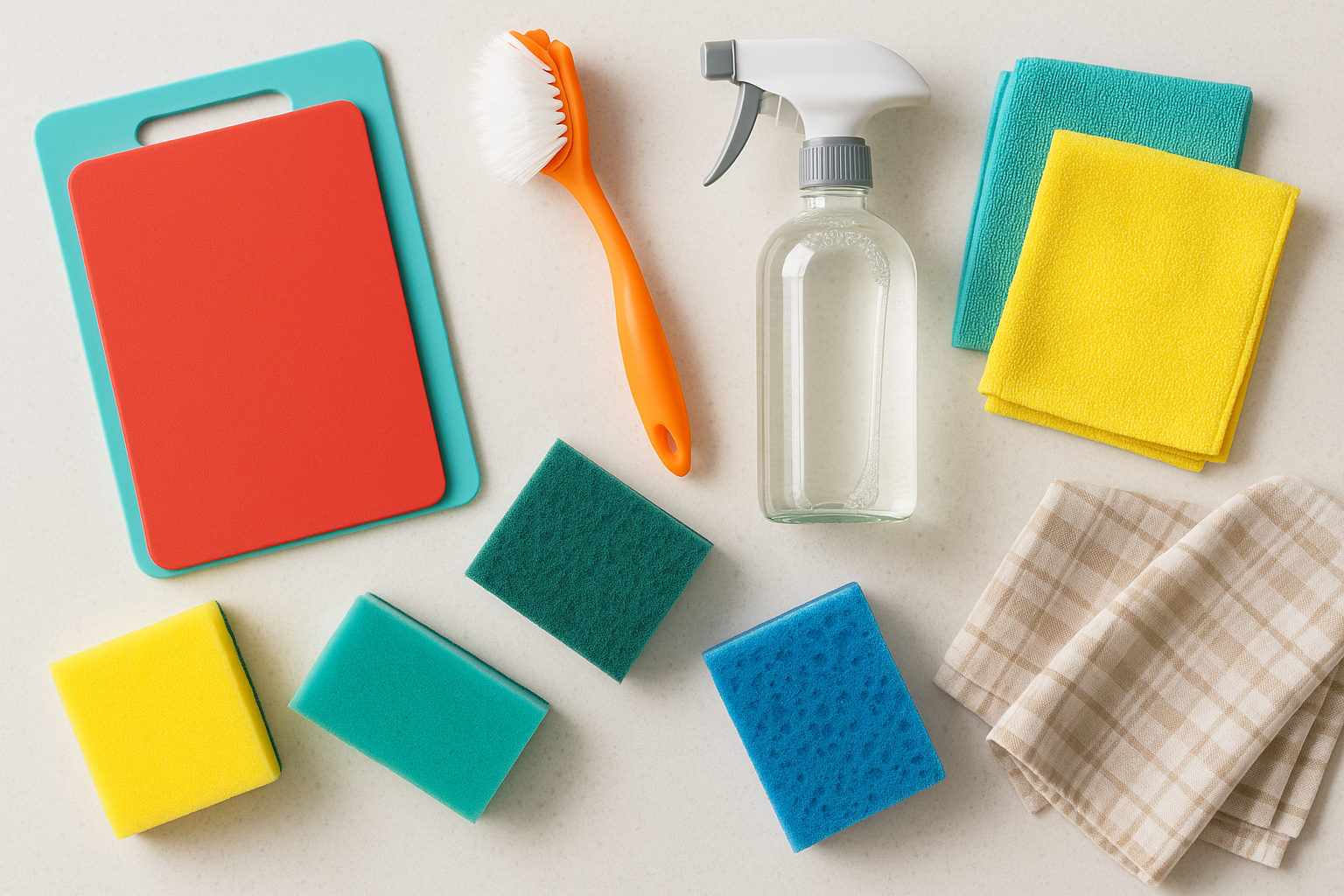Cross-contamination in the kitchen is a serious issue that often goes unnoticed until it’s too late. Whether you’re preparing raw meat, washing vegetables, or storing leftovers, the risk of harmful bacteria spreading to other foods is always present. This can lead to foodborne illnesses, which pose significant health risks to your family. But the good news is that preventing cross-contamination in your kitchen can be easy if you have the right cleaning tools and practice proper cleaning techniques.
In this blog, we’ll discuss how cleaning accessories can help minimize the risk of cross-contamination. We’ll cover how to use cleaning tools properly, what tools are most effective, and how to integrate these into your daily cleaning routine. With the right approach, you can keep your kitchen safe, hygienic, and free from harmful germs.
The Agitation: The Risks of Improper Cleaning and Neglect
Without the right cleaning tools, it’s easy to overlook spots where bacteria can build up. The worst part? Cross-contamination isn’t always visible, and harmful bacteria can linger on surfaces like countertops, cutting boards, and even sponges, making them prime locations for germs to spread.
Improperly cleaned kitchen cleaning accessories—such as dish towels, sponges, and cutting boards—act as breeding grounds for bacteria. Even something as seemingly harmless as a kitchen cloth can be a serious threat if not sanitized properly. Bacteria can transfer from one surface to another, contaminating fresh produce, ready-to-eat meals, or utensils. And since you’re using these surfaces and tools frequently, you’re continuously exposed to the risk of cross-contamination.
The Solution: Prevent Cross-Contamination with Proper Cleaning Tools
The good news is that preventing cross-contamination in your kitchen is achievable with a few simple steps. The key to keeping your kitchen safe is ensuring that the right cleaning tools are used properly and consistently. Below, we’ll discuss which tools are necessary and how you can use them to eliminate cross-contamination risks.
Choosing the Right Kitchen Cleaning Accessories
Not all cleaning tools are created equal. The right kitchen cleaning accessories will help you minimize bacteria buildup and maintain a sanitary kitchen environment. Here are the best tools and how to use them effectively:
High-Quality Sponges and Scrubbers
Sponges are essential for cleaning surfaces, but they can easily become contaminated if not properly maintained. Always use a separate sponge for different tasks. For example, designate one sponge for cleaning countertops and another for washing dishes. Sponges can also trap bacteria, so make sure to replace them regularly. To disinfect, soak your sponge in hot water mixed with vinegar or bleach, or use a microwave to kill germs.
Cutting Boards Designed for Safe Food Preparation
Investing in cutting boards designed to prevent cross-contamination is crucial. Ideally, you should have separate boards for raw meats and vegetables. The use of color-coded cutting boards can help you remember which board to use for each task. Wooden cutting boards should be cleaned and oiled regularly to prevent bacteria from seeping into cracks, while plastic boards should be thoroughly sanitized to avoid harboring germs in grooves and cuts.
Dish Towels and Cloths
Dish towels are often overlooked, but they can carry germs if not cleaned properly. Ensure you have a good number of dish towels and replace them often. Always wash them in hot water to kill bacteria, and avoid reusing towels without washing them in between uses. Consider using microfiber cloths as they are more effective at trapping bacteria compared to regular cotton towels.
Broom, Mop, and Floor Cleaning Tools
The floors in your kitchen are constantly exposed to crumbs, food spills, and moisture. Keeping your kitchen floors clean and free of debris helps prevent bacteria from spreading. Use a dedicated broom, mop, and dustpan to clean your kitchen floors regularly. Make sure to wash your mop heads frequently and disinfect your broom.
Sanitizing Sprays and Solutions
A sanitizing spray is one of the easiest ways to clean surfaces and reduce the risk of cross-contamination. Choose a non-toxic, food-safe disinfectant that is effective against germs like E. coli and Salmonella. Regularly wipe down countertops, handles, sink faucets, and any high-touch areas with the sanitizing spray.
Proper Use and Maintenance of Your Cleaning Accessories
Now that we know what cleaning tools to use, it’s equally important to maintain them properly. The best cleaning tools only work as well as their upkeep. For example:
- Sponges: Rinse thoroughly after each use and disinfect regularly. Replace them every couple of weeks.
- Cutting boards: Clean after each use, sanitize with mild bleach solutions or vinegar, and oil wooden boards regularly.
- Towels: Wash frequently, ideally in hot water, to kill any bacteria.
- Floor tools: Clean and disinfect regularly to prevent the spread of germs.
Conclusion: Protect Your Family with Proper Cleaning Tools
Using the right kitchen cleaning accessories is essential to prevent cross-contamination and ensure the health of your family. With a few small changes, like investing in high-quality cleaning tools, maintaining them properly, and using them consistently, you can reduce the risk of foodborne illnesses and maintain a safe, hygienic kitchen.
By understanding the importance of cleanliness and choosing the right cleaning tools, you can create a kitchen environment that is not only organized but also safe for everyone. Remember, the goal is to minimize germs and prevent cross-contamination—not just for the cleanliness of your kitchen, but for the well-being of your loved ones.

